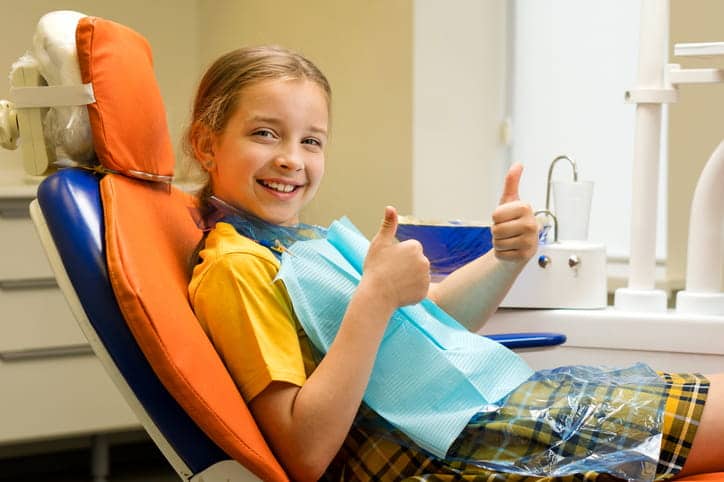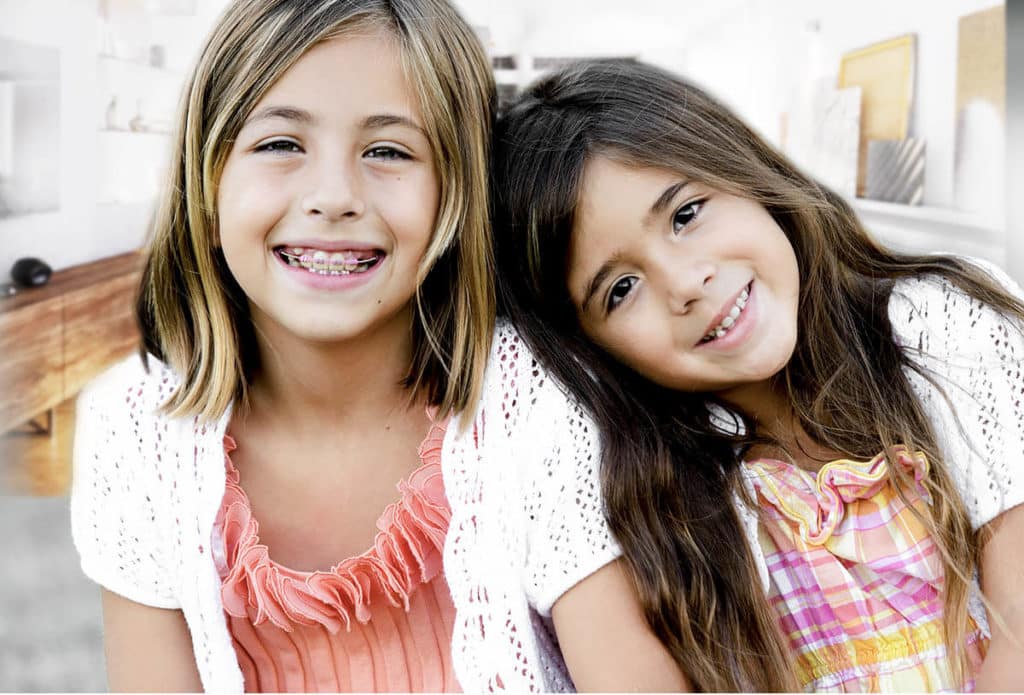Preschoolers
Teaching dental hygiene to preschoolers can be challenging because you want to find a balance between allowing them independence, and ensuring they’re doing it the right way. The best way to do this is to let your child brush and floss first while you monitor them. Then, you can follow up with brushing and flossing the areas they may have missed.
The ADA suggests children between 3 and 5 years old brush their teeth for two minutes, two times daily, with a pea-sized amount of fluoride toothpaste. Ask your child to spit the toothpaste out to minimize swallowing. Then, use dental floss or floss picks to clean between teeth.
Other ways parents can help their preschoolers keep their teeth clean include:
- Choose kid-friendly fluoride toothpastes that are not too harsh
- Let children pick their own toothbrush
- Have your child look in the mirror while brushing and flossing
- Explain why brushing their teeth is important
- Incorporate fun activities into the dental hygiene routine
School-Aged Children
As kids get older, they will be much more used to their dental hygiene practices. However, parents must still stay on top of their child’s brushing and flossing. Always reinforce consistent dental routines, and the importance of regular visits to the dentist. Also, check in often to ask about changes or questions they may have about their teeth.
Here are tips to keep your older children’s dental hygiene on track:
- Supervise brushing and flossing until your children are about 10 years old
- Introduce mouthwash and help your child use it properly
- Get regular fluoride treatments during dental check-ups
- Ask your dentist about dental sealants to prevent cavities
Allow your child to drink water that contains fluoride
Effective Techniques for Teaching Dental Hygiene
Being consistent, positive, and encouraging will make a significant impact on your child’s dental hygiene routine. However, you must also use the proper techniques and tools for effective results.
Selecting the Right Tools
Choosing the best toothbrush for your child will make it easier to keep their teeth and gums clean. For babies and toddlers, look for a toothbrush that is specifically made for that age group. These brushes are typically small, soft, and have a good grip for little hands. You can also find them in fun colors or characters.
Toothbrushes for older kids will have slimmer and longer handles that allow them to reach every part of their mouth. Involve your child in the process of choosing their toothbrush to encourage participation and independence.
When it comes to toothpaste, consult your dentist to see what option is right for your child. Pediatric dentists may recommend training toothpaste that does not contain fluoride for babies. Toddlers and children can use a mild fluoride toothpaste that comes in their favorite flavors.
Applying Proper Brushing and Flossing Techniques
It’s important to teach your children the correct way to keep their smile clean. Consider these things when showing your kids how to to brush and floss their teeth:
- Brush for two minutes, twice daily
- Have them use their dominant hand for the most control
- Hold the toothbrush at a 45-degree angle to the gums
- Brush back and forth and in a circular motion
- Clean the front and back side of all teeth
- Don’t forget to brush the tongue
- Clean between the teeth with waxed floss or a floss pick
Using Educational Tools and Resources
Parents have access to helpful tools and online resources that can help you teach the right dental techniques. For example, you can have your child watch an animated video about brushing their teeth or visiting the dentist. Books and coloring pages are also available to demonstrate the importance of brushing and taking care of your teeth.
Ask your dentist what resources or tools they recommend for your child. It will help to find age-appropriate materials that reinforce the techniques for tools you’ve already introduced.
Setting a Positive Example
As a parent, your kids are looking to you for guidance on how to take care of their teeth. If you prioritize oral hygiene, and show them that it’s part of your routine, it can be easier for children to incorporate these essential practices into their lives.
Study results show that proper dental habits by parents can have a positive effect on their children’s oral health. Educating yourself and passing that knowledge on to your children can significantly impact their dental care habits as they grow.
Finding Ways To Make Dental Care Fun
You also want to make dental hygiene practices fun for your kids. Children want something to look forward to, so making it exciting can help them avoid boredom with their routines. Six fun ways to teach kids dental hygiene include:
- Have a toothbrush dance party
- Create a colorful reward chart
- Use entertaining and engaging dental content
- Find toothbrushes that feature their favorite characters
- Set a family challenge
- Try different toothpaste flavors





















